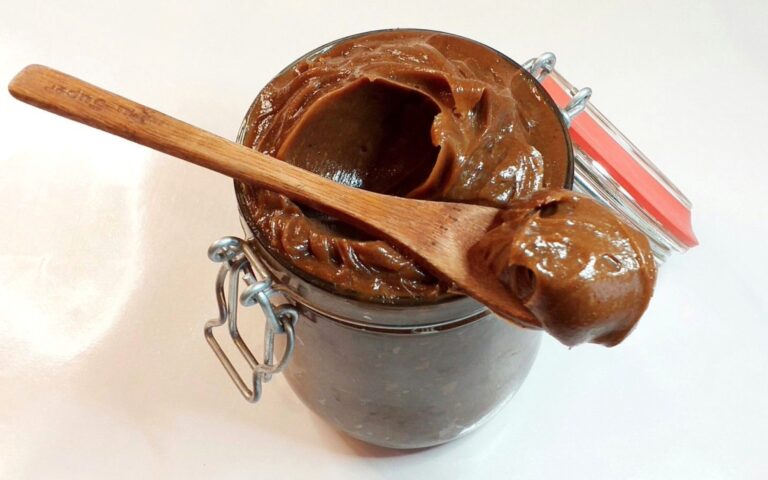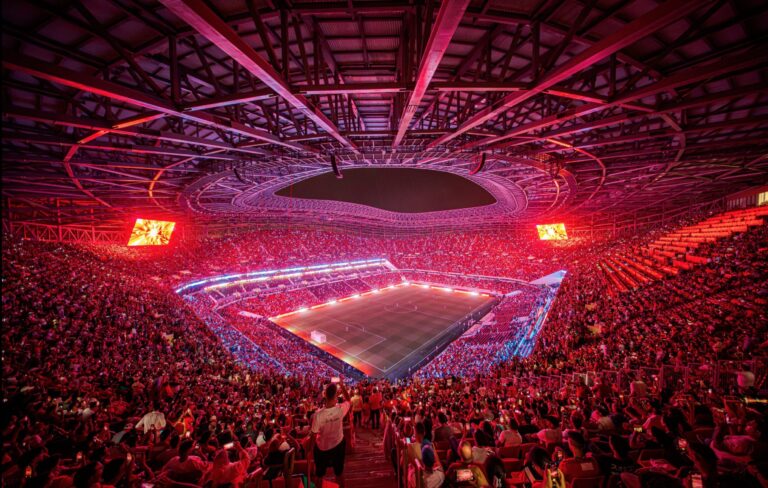
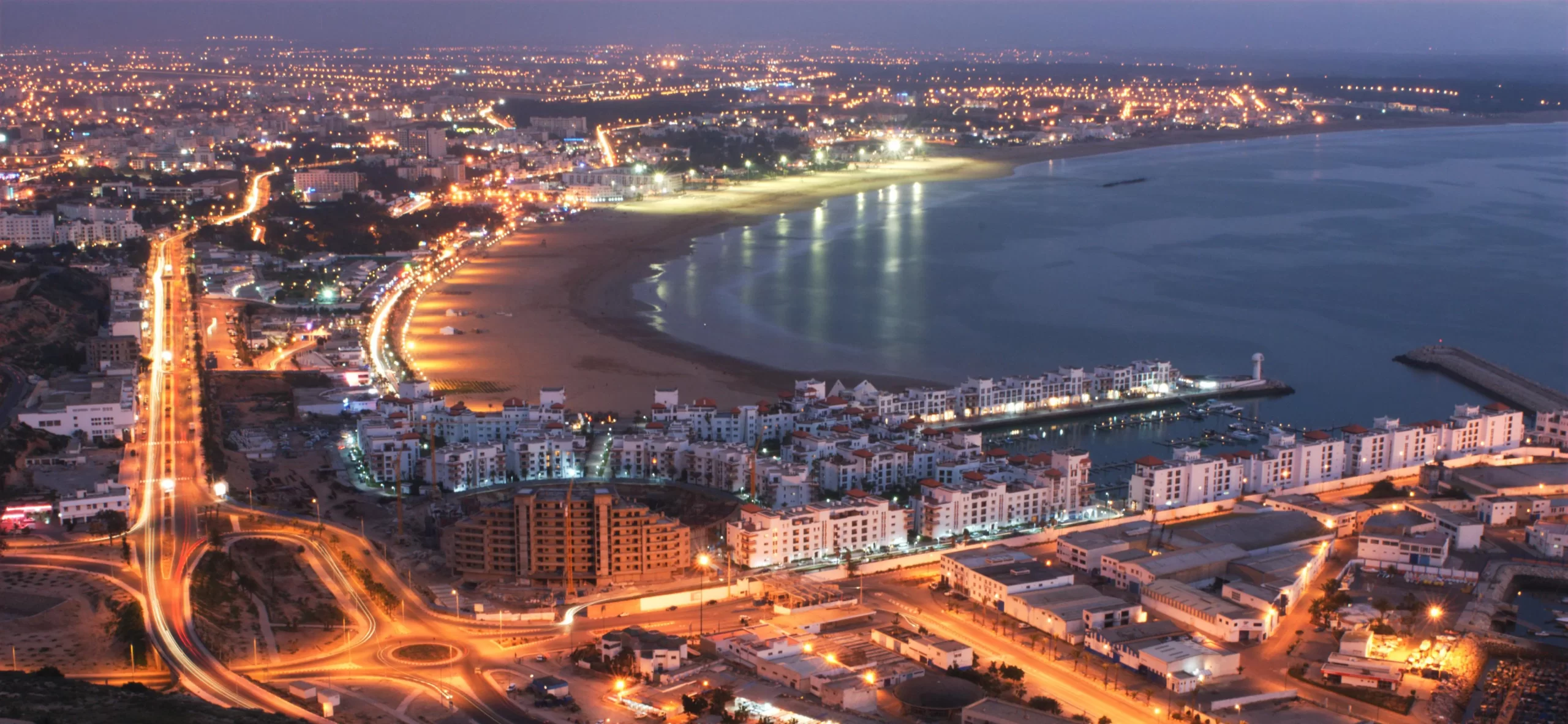
The Ultimate Morocco Travel Guide: Best Places to Visit & Tips (2025)
Morocco captivates travelers with its vibrant souks, stunning architecture, diverse landscapes, and rich cultural heritage. From the bustling medinas of Marrakech and Fez to the golden dunes of the Sahara Desert, this North African kingdom offers an unforgettable journey through ancient traditions and modern hospitality.
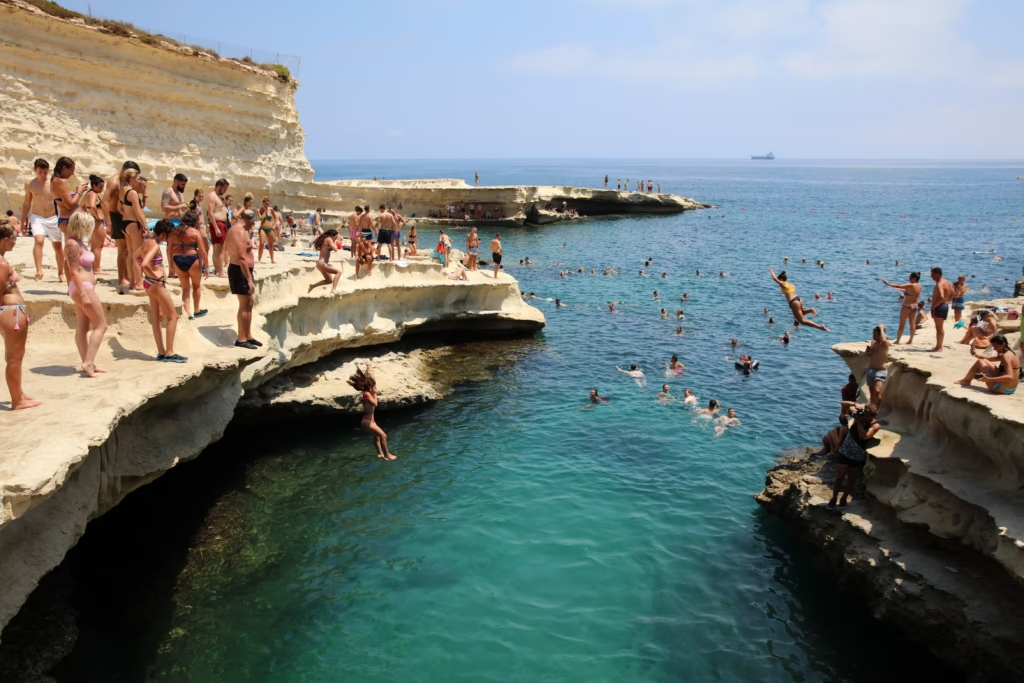
Best Time to Visit Morocco
Spring (March-May): Ideal weather with mild temperatures and blooming landscapes. Perfect for exploring cities and trekking.
Fall (September-November): Excellent conditions with comfortable temperatures and fewer crowds. Great for all activities.
Winter (December-February): Cool but pleasant in cities; perfect for desert visits. Avoid Atlas Mountains due to snow.
Summer (June-August): Hot in cities and desert areas. Best for coastal regions and mountain retreats.
Top 10 Must-Visit Places in Morocco
1. Marrakech – The Red City
Marrakech pulses with energy in its famous Jemaa el-Fnaa square, where snake charmers, storytellers, and food vendors create a sensory feast. Explore the labyrinthine souks, admire the intricate architecture of Bahia Palace, and find tranquility in the Majorelle Garden.
Don’t Miss:
- Koutoubia Mosque and its iconic minaret
- Ben Youssef Madrasa’s stunning Islamic architecture
- Saadian Tombs dating back to the 16th century
- Traditional hammam experience
2. Fez – Morocco’s Cultural Capital
Home to the world’s oldest continuously operating university, Fez preserves Morocco’s intellectual and spiritual heritage. The UNESCO-listed Fez el-Bali medina contains over 9,000 narrow streets and alleys.
Highlights:
- Al Quaraouiyine University and Mosque
- Chouara Tanneries with centuries-old leather-making techniques
- Bou Inania Madrasa’s exquisite craftsmanship
- Mellah (Jewish Quarter) historical sites
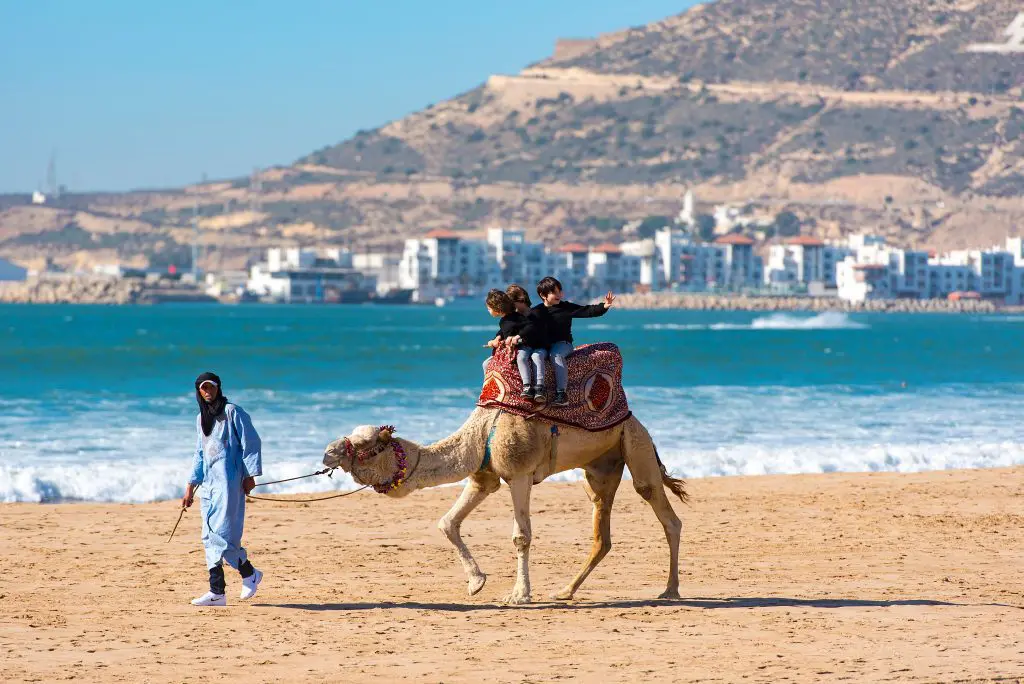
3. Casablanca – Modern Morocco
Morocco’s economic hub blends Art Deco architecture with contemporary culture. The massive Hassan II Mosque, partially built over the Atlantic Ocean, stands as an architectural marvel.
Key Attractions:
- Hassan II Mosque tours (one of the largest mosques globally)
- Corniche beachfront promenade
- Art Deco architecture in city center
- Rick’s Café (inspired by the famous film)
4. Chefchaouen – The Blue Pearl
Nestled in the Rif Mountains, this picturesque town enchants visitors with its blue-painted buildings and relaxed atmosphere. Perfect for photography and mountain hiking.
Must-Do Activities:
- Wander the blue-washed streets of the medina
- Hike to Spanish Mosque for panoramic views
- Shop for local handicrafts and textiles
- Experience traditional Rif cuisine
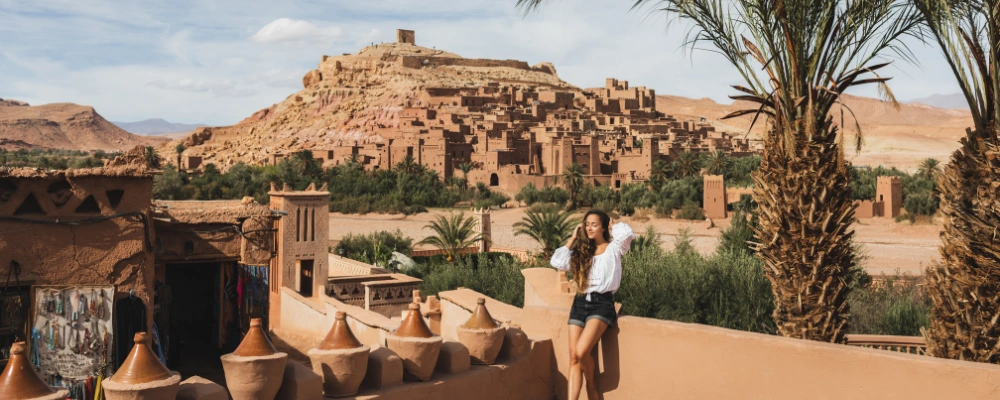
5. Sahara Desert – Merzouga & Erg Chebbi
Experience the magic of the Sahara with camel trekking, desert camping, and stunning sunrises over golden dunes. Merzouga serves as the gateway to Morocco’s most accessible desert region.
Desert Experiences:
- Camel trekking at sunset and sunrise
- Overnight camping in traditional Berber tents
- Sandboarding on massive dunes
- Stargazing in clear desert skies
6. Atlas Mountains – High Atlas Adventures
Morocco’s mountainous backbone offers excellent trekking, Berber village visits, and stunning scenery. Mount Toubkal (4,167m) is North Africa’s highest peak.
Mountain Activities:
- Toubkal National Park trekking
- Berber village homestays
- Ourika Valley day trips
- Imlil base camp hiking
7. Essaouira – Coastal Charm
This UNESCO World Heritage port city combines Portuguese colonial architecture with Moroccan culture. Famous for its laid-back vibe, fresh seafood, and artistic community.
Coastal Highlights:
- Historic medina and ramparts
- Fresh seafood at the harbor
- Windsurfing and kitesurfing
- Traditional woodworking workshops
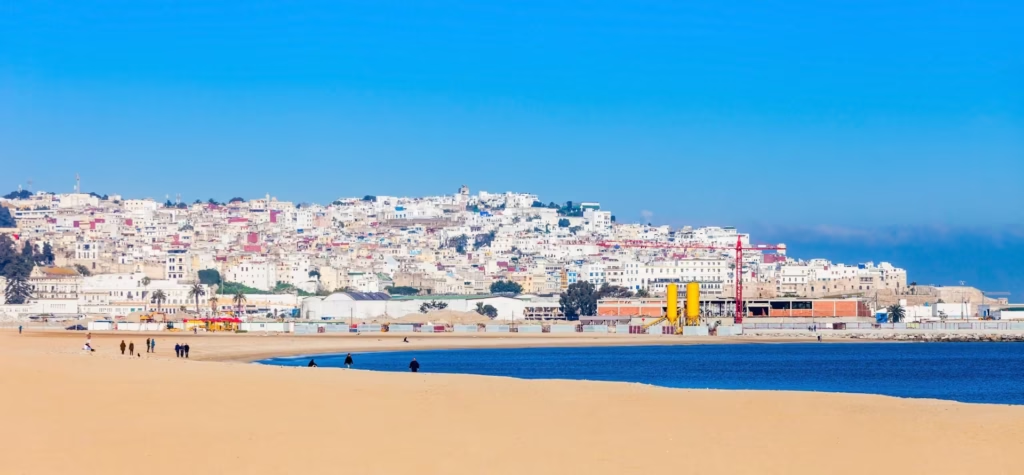
8. Rabat – Capital Elegance
Morocco’s political capital showcases imperial grandeur with well-preserved historical sites and modern amenities. Less touristy than other imperial cities.
Royal Capital Sights:
- Hassan Tower and Mohammed V Mausoleum
- Kasbah of the Udayas overlooking the Atlantic
- Royal Palace grounds
- Archaeological Museum
9. Meknes – Imperial Grandeur
Often overlooked, Meknes offers impressive imperial architecture without the crowds. The massive Bab Mansour gate ranks among Morocco’s most beautiful.
Imperial City Features:
- Bab Mansour monumental gate
- Royal Stables and granaries
- Moulay Ismail Mausoleum
- Nearby Roman ruins of Volubilis

10. Tangier – Gateway to Africa
This cosmopolitan port city where Africa meets Europe has attracted artists and writers for centuries. Rich history and strategic location create unique cultural fusion.
International City Attractions:
- Caves of Hercules near Cape Spartel
- Kasbah Museum and gardens
- Grand Socco marketplace
- American Legation Museum
Perfect Morocco Itineraries

7-Day Morocco Itinerary
Day 1-2: Marrakech
- Explore Jemaa el-Fnaa and souks
- Visit major palaces and gardens
- Traditional hammam and dinner show
Day 3: Atlas Mountains
- Day trip to Ourika Valley or Imlil
- Berber village visit and hiking
Day 4-5: Sahara Desert (Merzouga)
- Drive through scenic landscapes
- Camel trek and desert camping
- Sunrise over sand dunes
Day 6: Fez
- Travel day with stops in small towns
- Evening arrival and medina walk
Day 7: Fez
- Full day exploring the ancient medina
- Departure preparations

10-Day Morocco Itinerary
Add to the 7-day itinerary:
- Day 8-9: Chefchaouen – Blue city exploration and mountain hiking
- Day 10: Casablanca – Modern Morocco and Hassan II Mosque
14-Day Morocco Grand Tour
Include all major destinations:
- Extend desert experience with additional camping
- Add Essaouira for coastal relaxation
- Include Meknes and Volubilis for historical depth
- More time for Atlas Mountains trekking
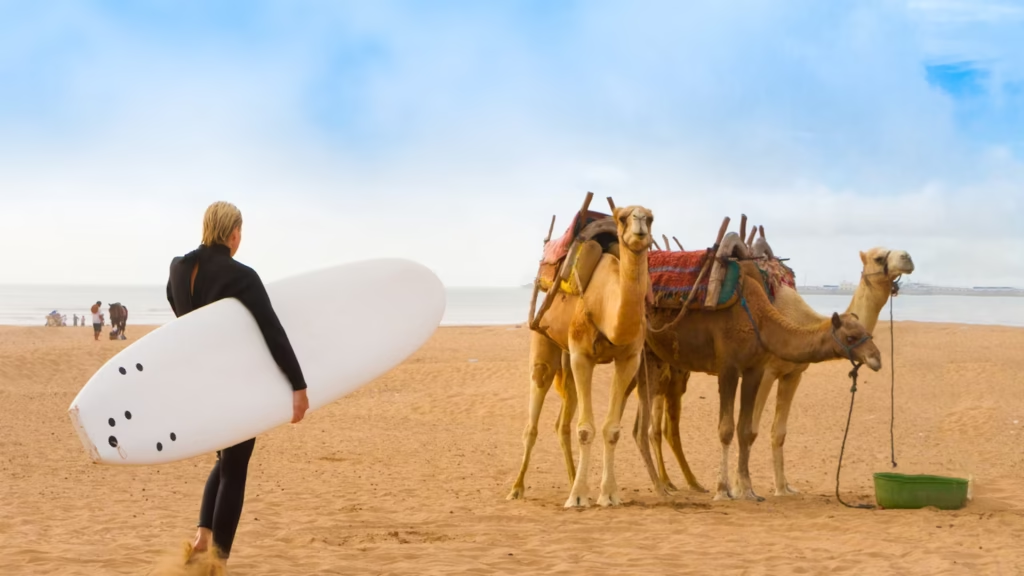
Essential Morocco Travel Tips
Transportation
Domestic Flights: Connect major cities quickly but limit ground-level experiences.
Train Travel: Comfortable and reliable between major cities (ONCF railway system).
Grand Taxis: Shared taxis for intercity travel; negotiate prices beforehand.
Car Rental: Offers flexibility but requires confidence with local driving conditions.
Private Tours: Convenient for desert trips and remote locations.
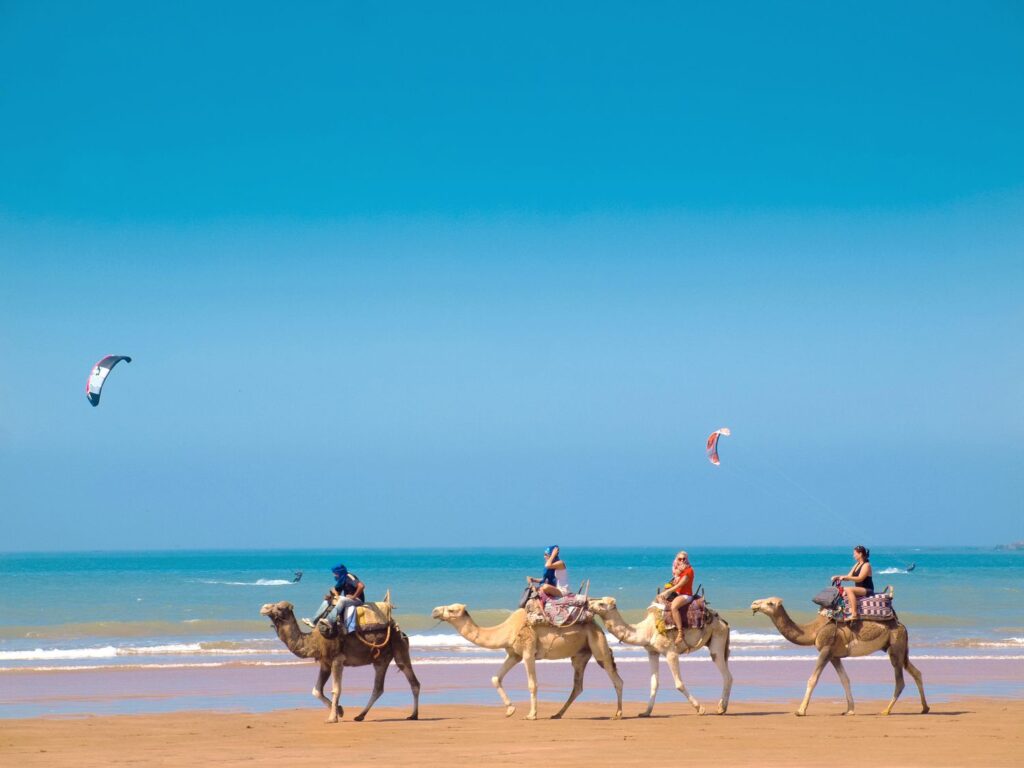
Accommodation Types
Riads: Traditional houses with interior courtyards, especially in medinas.
Hotels: International chains and local establishments in all price ranges.
Desert Camps: Authentic Sahara experience with varying luxury levels.
Guesthouses: Family-run accommodations offering personal touches.
Cultural Etiquette
Dress Modestly: Cover shoulders and knees, especially in religious sites.
Respect Local Customs: Remove shoes in mosques and homes when requested.
Photography: Ask permission before photographing people.
Bargaining: Expected in souks; start at 30-40% of initial price.
Tipping: Customary for guides, drivers, and service staff.
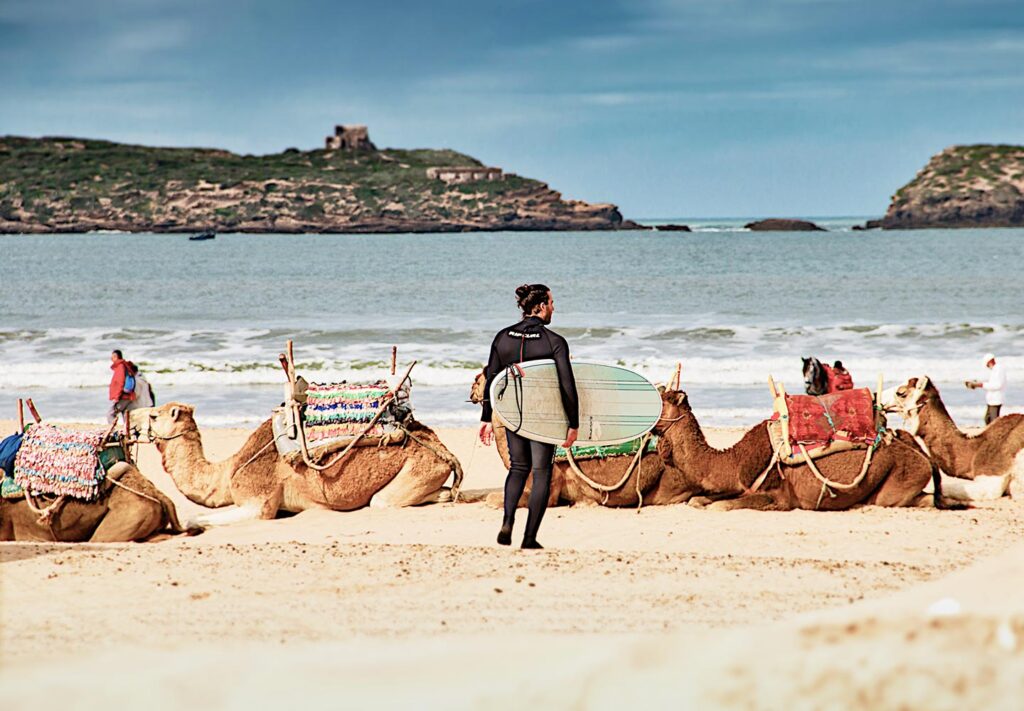
Health and Safety
Vaccinations: No special requirements; standard travel vaccinations recommended.
Water: Drink bottled water; avoid ice in drinks.
Food Safety: Choose busy restaurants; be cautious with street food initially.
Sun Protection: Strong UV rays require sunscreen, hats, and protective clothing.
Travel Insurance: Highly recommended for medical coverage and trip protection.
Money and Budgeting
Currency
Moroccan Dirham (MAD) – Cannot be obtained outside Morocco
Exchange: Use official exchange offices or banks; avoid street exchangers
ATMs: Widely available in cities; notify your bank of travel plans
Cards: Major credit cards accepted in hotels, restaurants, and shops
Daily Budget Estimates
Budget Travel: $30-50 per day
- Hostels and basic guesthouses
- Street food and local restaurants
- Public transportation
- Basic activities
Mid-Range Travel: $60-120 per day
- Comfortable riads and hotels
- Mix of local and tourist restaurants
- Private transportation for some activities
- Guided tours and excursions
Luxury Travel: $150+ per day
- Premium riads and international hotels
- Fine dining experiences
- Private guides and transportation
- Exclusive activities and spas
Moroccan Cuisine Must-Tries

Signature Dishes
Tagine: Slow-cooked stew in conical clay pot with meat, vegetables, and aromatic spices.
Couscous: Traditional Friday dish served with vegetables and meat.
Pastilla: Sweet and savory pastry with pigeon or chicken, almonds, and cinnamon.
Harira: Hearty soup with tomatoes, lentils, and chickpeas, especially during Ramadan.
Mechoui: Slow-roasted lamb seasoned with herbs and spices.
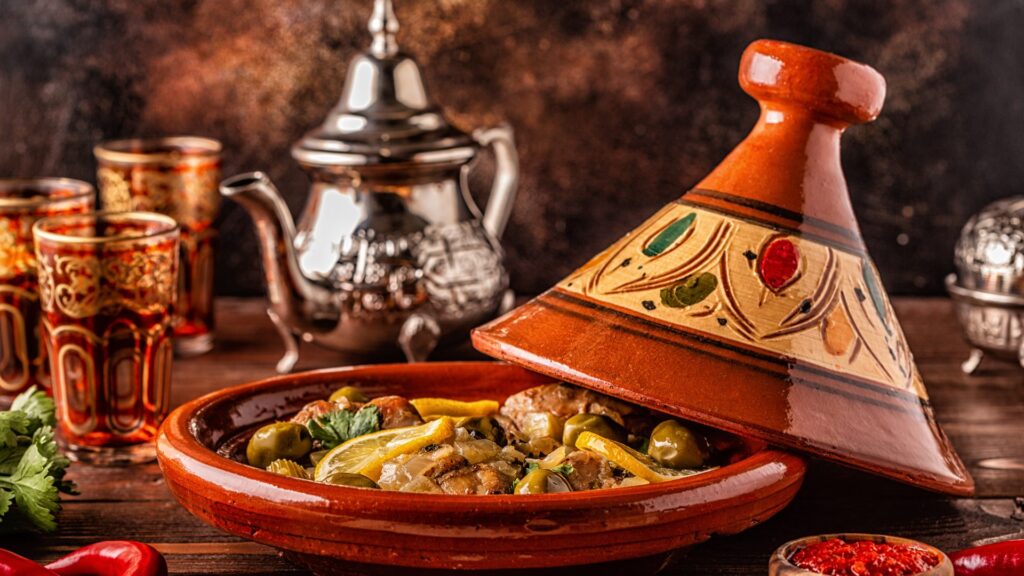
Beverages
Mint Tea: National drink served throughout the day in small glasses.
Fresh Juices: Orange, pomegranate, and mixed fruit juices from street vendors.
Coffee: Strong espresso-style coffee, often with cardamom.
Language and Communication
Arabic: Official language; Moroccan dialect differs from standard Arabic.
Berber (Amazigh): Indigenous language spoken in rural areas.
French: Widely spoken due to colonial history; useful in cities.
English: Growing in tourist areas; limited in rural regions.

Essential Arabic Phrases
- Hello: As-salāmu ʿalaykum
- Thank you: Shukran
- Please: Min fadlik
- Yes/No: Na’am/La
- How much?: Kam?
- Water: Ma
- Food: Ta’am
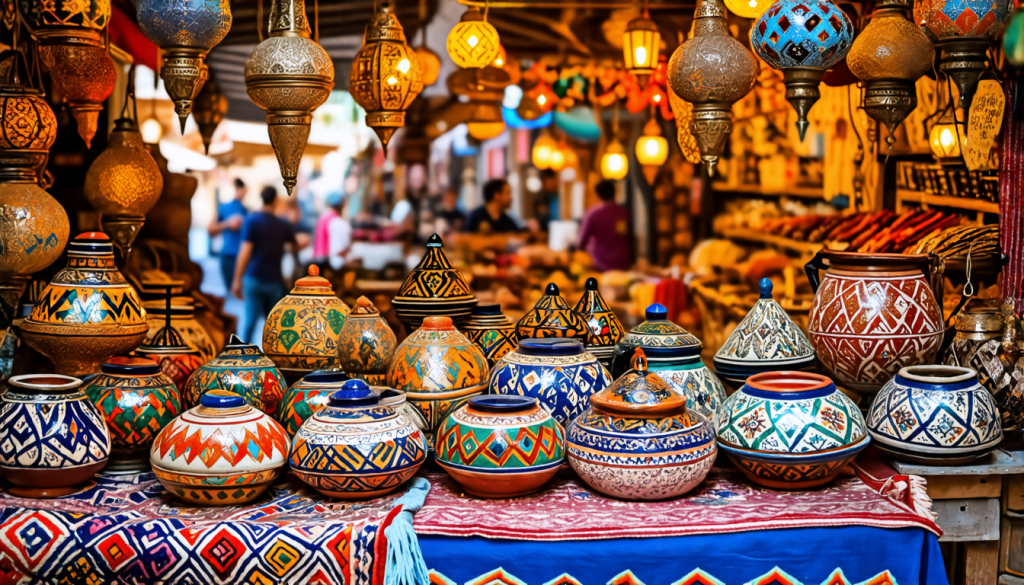
Shopping and Souvenirs
Best Purchases
Handwoven Carpets: Berberian and Arab designs in various sizes and patterns.
Leather Goods: Bags, shoes, and jackets from famous tanneries.
Ceramics and Pottery: Colorful plates, bowls, and decorative items.
Spices: Saffron, ras el hanout, and aromatic spice blends.
Argan Oil: Unique to Morocco; excellent for skin and hair care.
Traditional Clothing: Djellabas, kaftans, and embroidered textiles.
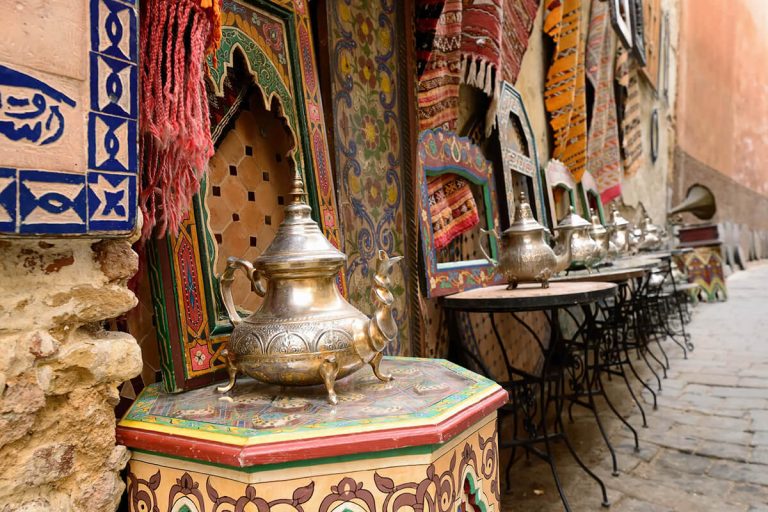
Shopping Tips
Bargaining Strategy: Start low, stay patient, and be prepared to walk away.
Quality Check: Examine items carefully; ask about materials and origins.
Authentic vs. Tourist Items: Shop where locals buy for better prices and quality.
Shipping Services: Many shops offer international shipping for large purchases.
Weather and Packing Guide
What to Pack
Clothing:
- Lightweight, breathable fabrics for hot weather
- Warm layers for cool evenings and mountains
- Modest clothing respecting local customs
- Comfortable walking shoes and sandals
Accessories:
- Sun hat and quality sunglasses
- High SPF sunscreen and lip balm
- Small backpack for day trips
- Water bottle with purification tablets
Electronics:
- Universal power adapter (Type C and E plugs)
- Portable charger/power bank
- Camera with extra batteries and memory cards
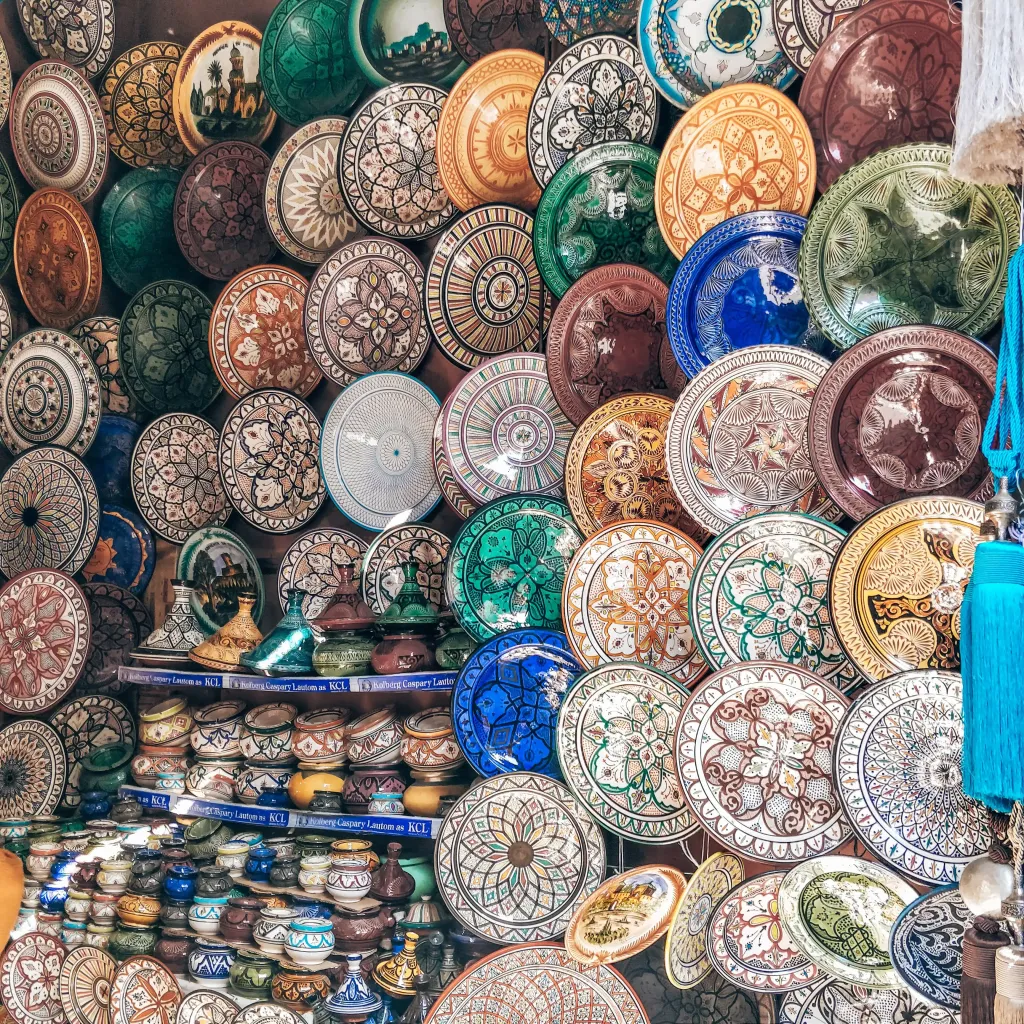
Frequently Asked Questions
Is Morocco Safe for Tourists?
Morocco is generally safe for tourists with standard precautions. Stay aware of surroundings, use official guides, and avoid isolated areas at night. Women travelers should dress modestly and consider joining group tours for comfort.
Do I Need a Visa to Visit Morocco?
Citizens of many countries (including US, EU, Canada, Australia) can visit Morocco visa-free for up to 90 days. Check current requirements based on your nationality before traveling.
What Should I Expect from Moroccan Hospitality?
Moroccans are known for their warm hospitality. Expect invitations for tea, helpful directions, and genuine friendliness. However, distinguish between genuine hospitality and commercial approaches in tourist areas.
How Do I Handle Persistent Vendors?
Politely but firmly say “La, shukran” (No, thank you) and keep walking. Avoid extended eye contact or conversation if not interested. Having a local guide can help navigate persistent selling situations.
Is the Food Safe for International Travelers?
Generally yes, with precautions. Choose busy restaurants with high turnover, drink bottled water, and gradually try street food. Your stomach may need time to adjust to new spices and preparation methods.
Can I Drink Alcohol in Morocco?
Alcohol is available in licensed hotels, restaurants, and some shops, though not widely consumed due to Islamic culture. It’s more expensive than in Western countries and not available everywhere.
What’s the Best Way to Experience the Sahara Desert?
Book through reputable tour operators offering various experience levels from basic camping to luxury desert camps. Most tours include transportation, meals, camel rides, and guided activities.
How Much Should I Budget for Shopping?
Depends on interests and bargaining skills. Budget $20-100 for small souvenirs, $100-500 for quality carpets or leather goods. Always negotiate and compare prices across multiple shops.

Conclusion
Morocco offers an incredible journey through diverse landscapes, rich culture, and warm hospitality. From the imperial cities’ historical grandeur to the Sahara’s natural beauty, every experience contributes to unforgettable memories. Plan according to your interests, respect local customs, and remain open to the unexpected adventures that make Morocco truly magical.
Whether you’re drawn to architectural wonders, culinary adventures, outdoor activities, or cultural immersion, Morocco delivers experiences that satisfy every type of traveler. Start planning your Moroccan adventure and prepare for a destination that will exceed your expectations and leave you planning your return visit.
Ready to explore Morocco? Begin with one of the suggested itineraries, book accommodations in advance for peak seasons, and prepare for an adventure that combines ancient traditions with modern hospitality in one of the world’s most captivating destinations.



